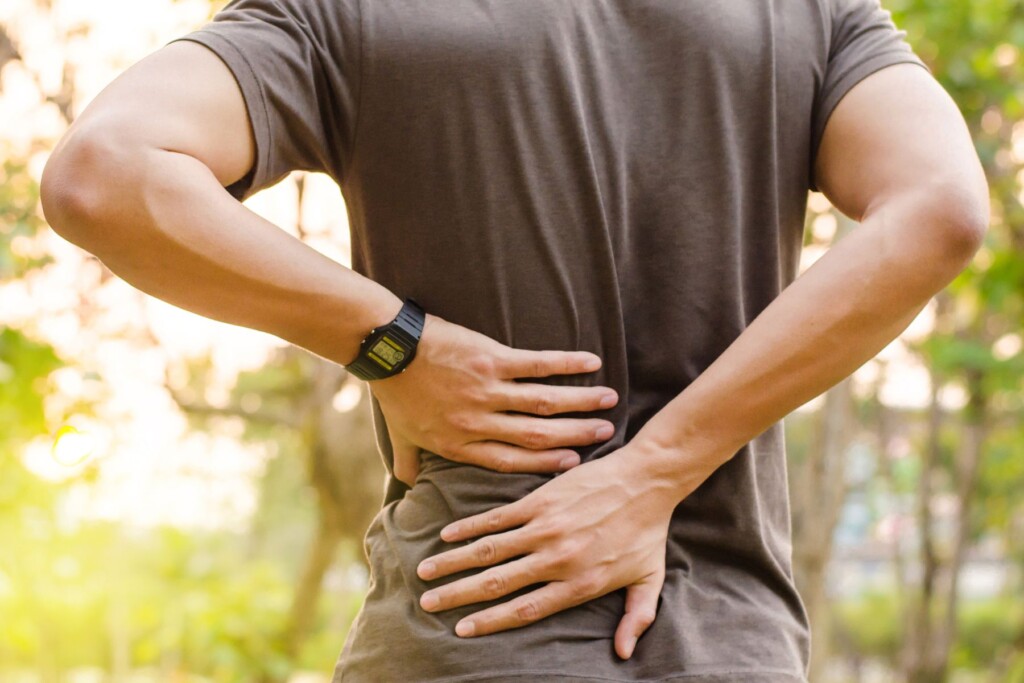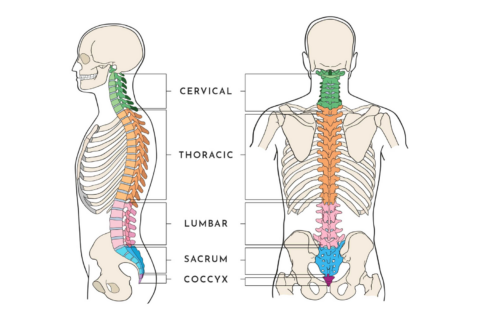Banishing Back Pain: Causes, Treatment and Prevention

About 85% of Americans experience back pain by age 50, making back problems the leading cause of occupational disability in the world. Keep reading to learn about spinal anatomy, common causes of pain and ways to prevent it from happening to you.
Spinal Anatomy
The spine is comprised of four regions—cervical, thoracic, lumbar and sacrum/coccyx. Most commonly, back pain is associated with the cervical and lumbar regions of the spine due to the increased range of motion in these regions. Each of these regions are made up of facet joints which allow for movement and stability through vertebral bodies, which provide the framework of the spine.

Classifying Pain
Back pain can be broken into several classifications. One way to categorize back pain is based on timing of the pain. Acute pain is defined as 0-4 weeks, subacute is 4-12 weeks and chronic pain lasts longer than 12 weeks.
A second way to classify pain is to look at the different reasons why back pain develops. Some reasons are modifiable, such as posture and maintaining physical fitness. Others are non-modifiable such as aging, genetics, and unforeseen accidents and injuries.
The last way to classify pain is to investigate the pathology and location related to the pain. Axial back pain generally refers to pain associated with the bones and joints of the spine. Common bone problems would include arthritis, disc problems or sacroiliac joint problems¾the joint at the base of the spine which attaches to the pelvis. This type of pain is often localized to the low back and can radiate into the legs but generally does not go below the knee.
The Back Pain Cycle
When there is an injury to the back it leads to acute pain, which makes it hurt to move. The natural response to this is to avoid movement and the pain associated with it. However, this lack of movement leads to increased stiffness, weakness and worsening pain which leaves the back more prone to injury. Movement is a necessary part of stopping this cycle. Maintaining functionality is the most important thing to do for reducing pain and improving health.
Diagnosis and Treatment Plans
Some home treatments that can ease pain are heat and cold compresses, over-the-counter analgesics and light back exercises. Additionally, mindfulness and stress reduction has been found to be helpful for treating pain.
In regards to medications, Island Sports & Spine leans towards a minimalist approach and will maintain medications at the lowest effective dose. Combination of NSAID/Tylenol has been found to be quite effective, especially for arthritic conditions. However, it is recommended to limit exposure of NSAIDs to three months, as they have a risk of kidney damage, ulcers and an increased risk of heart attack and stroke.
Interventional treatments are also available and depend upon the pathology. These can include epidural injections, facet treatments, SI joint injections and many more.
Health and Prevention
There is no magic cure for pain but there are things to prevent it from occurring in the first place. Improving body mechanics such as proper lifting technique and posture will help improve strength and stability in the back to prevent injuries. Similarly, focusing on physical fitness will help protect from injury and can help delay the onset of arthritis and age-related back pain.
If you suffer from chronic back pain, know that there are procedures that can help relieve your pain and keep you moving. Talk to your primary care provider about a referral or call the Island Sports & Spine clinic at 360.299.4929.
